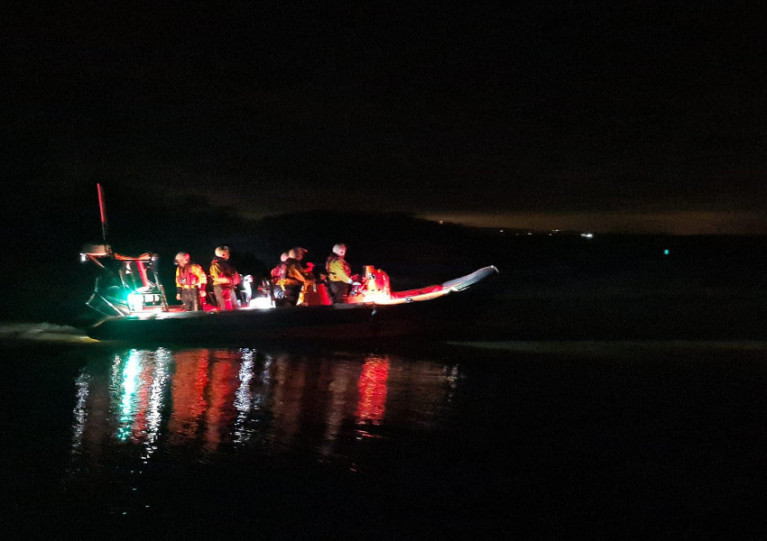Displaying items by tag: Lough Neagh Rescue
On Sunday 5th June lifeboats went to the aid of a jet ski with two people on board in difficulties on the River Blackwater which flows into the south western corner of Lough Neagh. It was towed to Maghery where the casualties were handed over to the Coastguard team.
And on the same day the Lifeboats were tasked by Belfast Coastguard to attend a vessel with five people on board that had broken down on its way from Ardboe on the western shore of the Lough to Sandy Bay Marina on the east. By the time the Lifeboats attended the scene the casualty vessel had managed to start the engines and were able to make their own way back to Sandy Bay, escorted by the Lifeboats.
On Thursday 9th there was another call out to a vessel with two on board which had broken down near Kinnego Bay in the south of the Lough and it was towed back to the Marina
And on 11th June, the lifeboats and shore crew were tasked to search for a vessel that had lost steering on the River Bann. But as information was limited both the Upper and Lower River Bann (which flow into both the North and South ends of the Lough) were searched.
The casualty vessel with two on board was located on the Lower Bann and after a side tow was secured, the vessel was brought to the jetty at the lock gate where it was inspected for damage and the steering problem was resolved. With steering and propulsion checked a crew member remained onboard the casualty vessel whist the lifeboat escorted it from the River Bann to its mooring in Ballyronan marina.
Lough Neagh Rescue Alerted to Overturned Jet Ski
On Monday, May 2 Lough Neagh Rescue was alerted by Belfast Coastguard to reports of an overturned Jetski in Antrim Bay on the Northeast corner of what is the largest freshwater lake in the British Isles and Ireland.
Two casualties were taken from the water onboard the lifeboat and then were transferred to Antrim Marina where they received medical attention before being handed over to the Northern Ireland Ambulance Service.
Also at the scene was the Lough Neagh Coastguard Rescue Team which is based at Kinnego Marina on the Southeast corner of the Lough.
Lough Neagh Rescue is a voluntary search and rescue organisation based on the shores of Lough Neagh.
Seven Rescued After Two Boats Run Aground In Lough Neagh
Seven people were rescued from two vessels that ran aground on Lough Neagh in Northern Ireland on Saturday night (12 September).
Lifeboats and shore crew were quickly tasked by Belfast Coastguard to the scene at Coney Island, where the vessels were in just 1-2 feet of water.
Their position in the shallows — plus an onshore wind creating a lot of swell — made access difficult, according to Lough Neagh Rescue.
The team decided to carry out a lee shore rescue, with two crew entering the water to rig a tow on the first casualty vessel, with three on board. This boat was bright to safety in Maghery, east of Dungannon.
Next, Lough Neagh Rescue launched its swift water boat from the slip at Maghery to bring the four people on the other grounded vessel to safety.
With all seven back ashore, rescue crews returned to the grounded boat to try to remove it from the rocks — an effort that was eventually successful. Once refloated, the boat was taken under tow to safe mooring at Maghery.
Lough Neagh Rescue also launched last night (Sunday 13 September) to a broken-down vessel on the Blackwater River.
Two people on board the vessel, which was half-way between the Maghery and the M1 motorway bridge, were taken onto the lifeboat while a rescue team member set up a tow for the stricken vessel.





























































